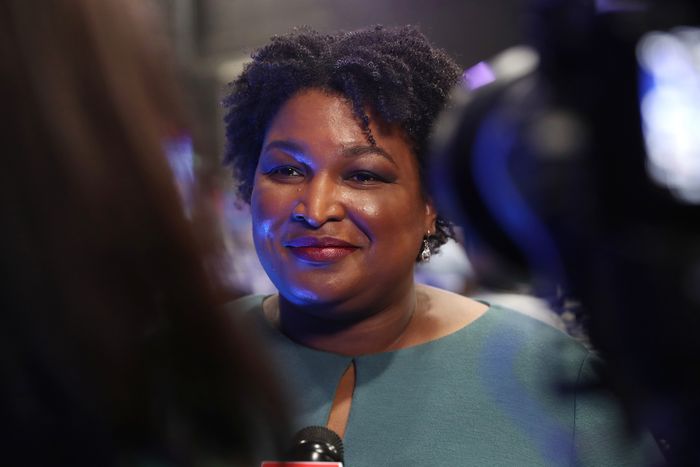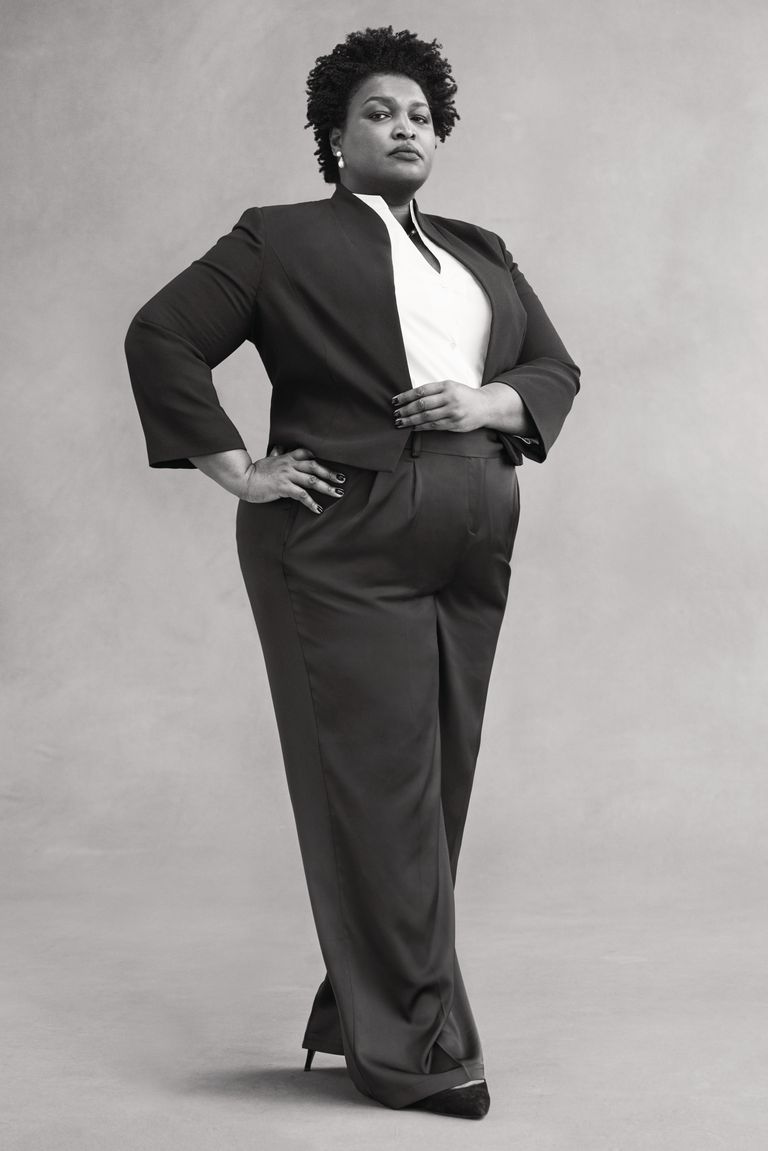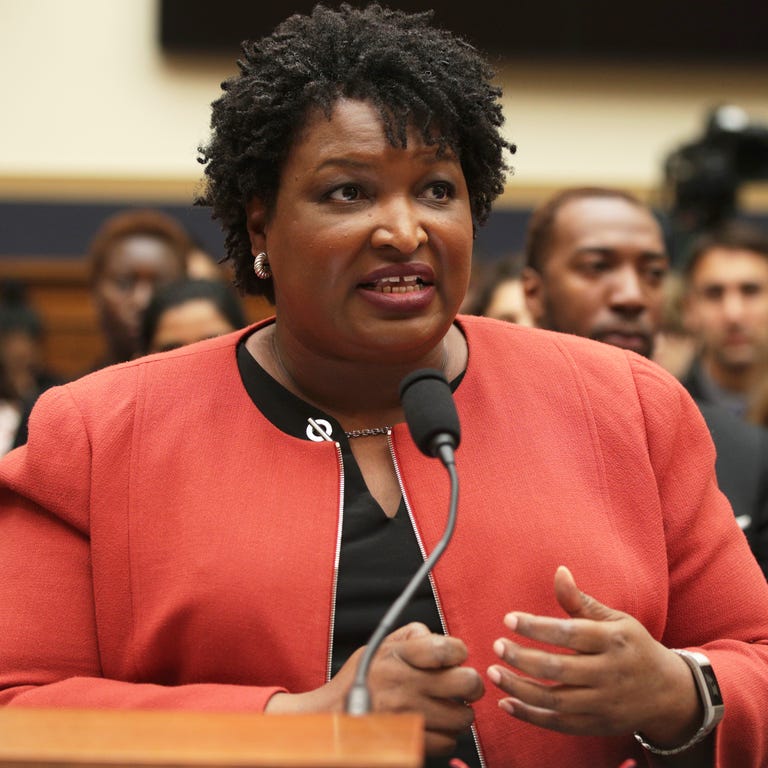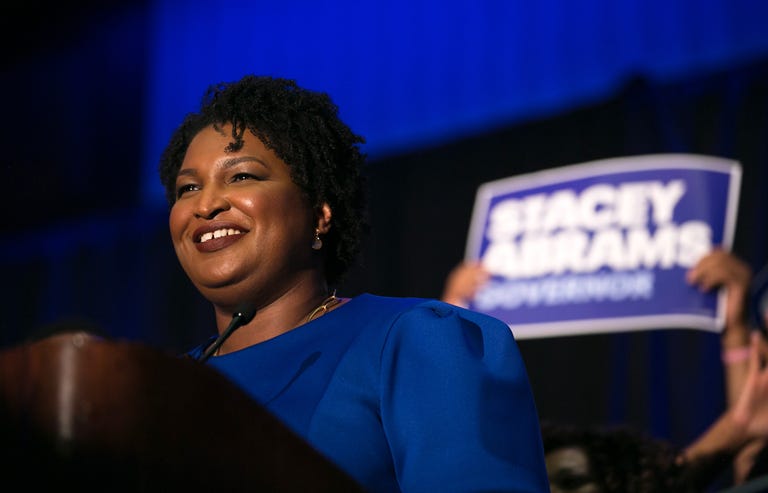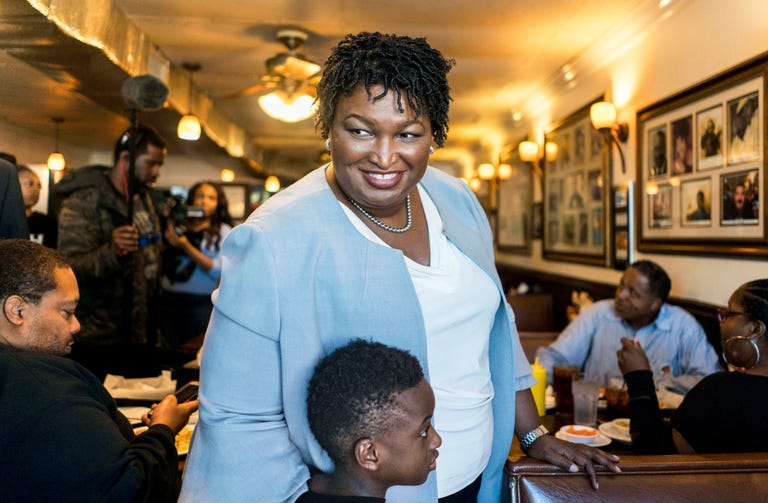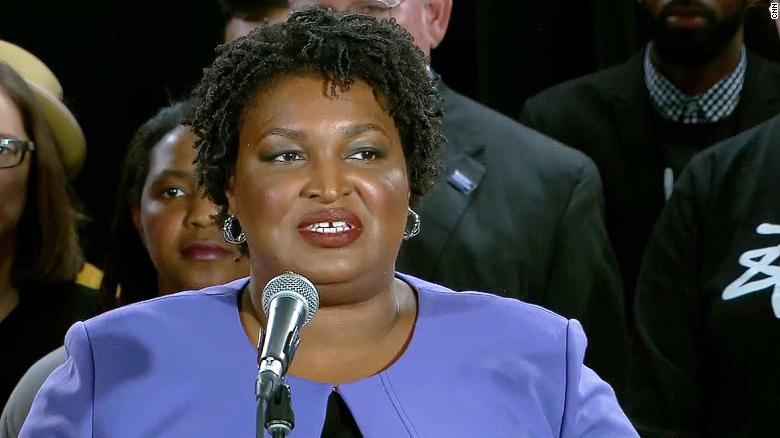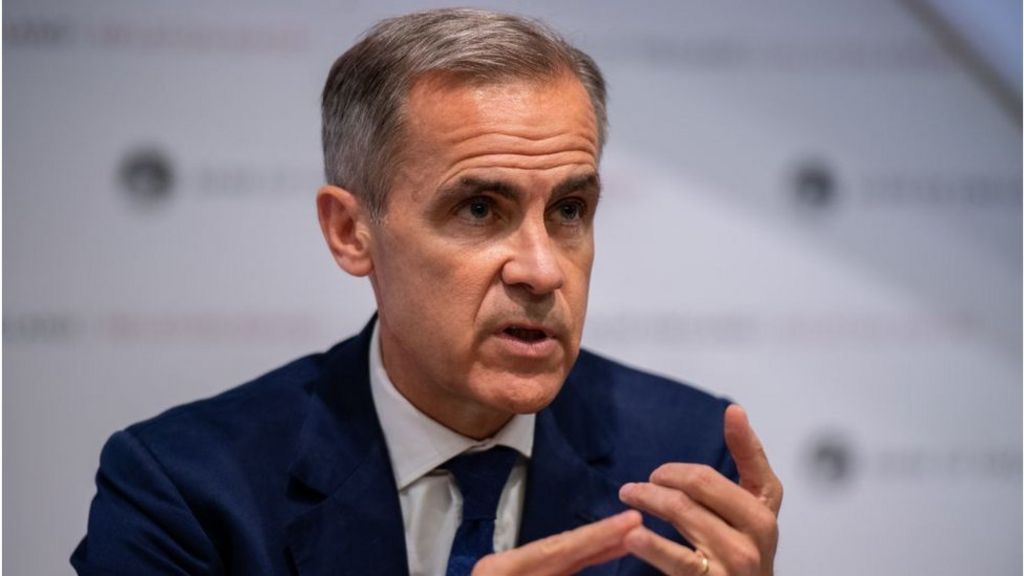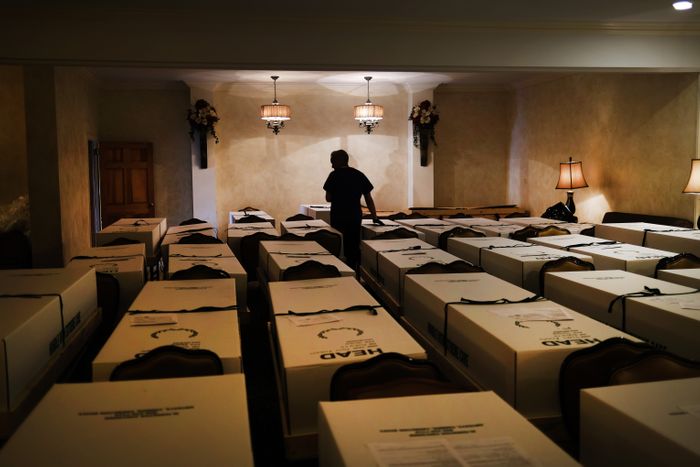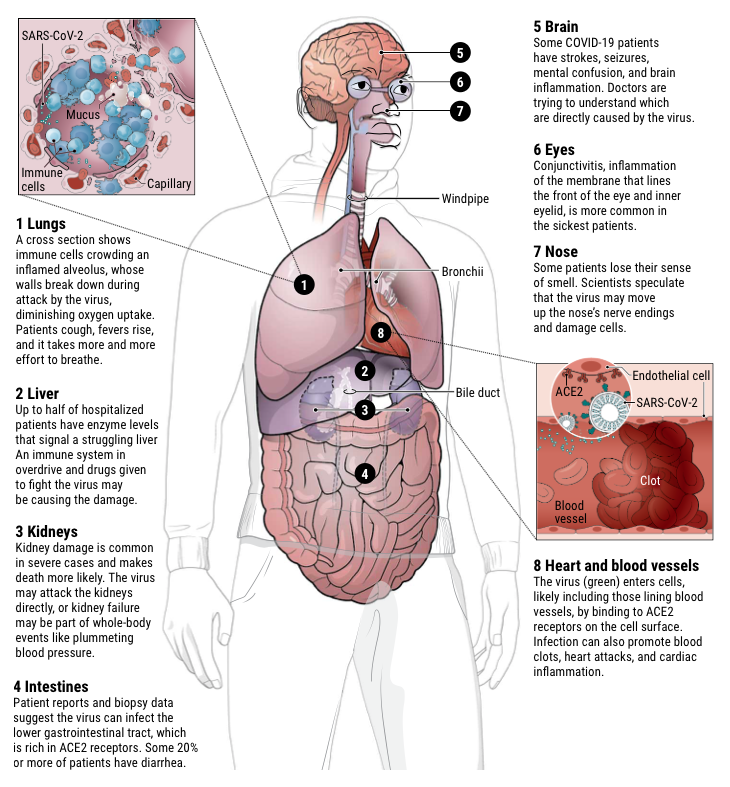There’s Nothing Wrong With Stacey Abrams’s Campaign to Be Vice-President Biden’s own decision to narrow the field to women
Democratic lawmaker knocks Stacey Abrams: 'Inappropriate' to lobby for Biden's VP Abrams has taken the rare step of touting her strengths as a potential VP in an interview with The Atlantic last week, and has made other public comments in support of such a political partnership. ........ I ran the most successful campaign to engage the communities we need to build the broadest coalition necessary in 2020 ........ "She values honesty and encourages all women and girls - particularly women and girls of color - to speak up when asked if they are qualified to lead. ...... the progressive strategy network Way to Win released survey data indicating Stacey Abrams was Biden’s strongest potential lieutenant. .........
Stacey Abrams On Voting Rights, COVID-19, And Being Vice President
"I would be an excellent running mate."
...... “Yes. I would be honored,” Abrams says. “I would be an excellent running mate. I have the capacity to attract voters by motivating typically ignored communities. I have a strong history of executive and management experience in the private, public, and nonprofit sectors. I’ve spent 25 years in independent study of foreign policy. I am ready to help advance an agenda of restoring America’s place in the world. If I am selected, I am prepared and excited to serve.” ............Abrams’s direct response betrays ambition, makes verifiable claims, and establishes outcomes to which she could later be held accountable. By normal political rules, it is the wrong answer.
.......... Amid this chaotic unpredictability, Abrams’s candor is disarming and comforting. ....... A graduate of Spelman College, the LBJ School of Public Affairs at UT Austin, and Yale Law School ......... On the heels of her defeat, she founded Fair Fight, a national organizing effort to ensure fair elections. This was followed by Fair Count, which works to achieve a fully accurate and representative census. Then, late last year, Abrams launched the Southern Economic Advancement Project to promote equitable economic and social policy for all races, classes, and genders across the region. .......... the first black woman to deliver the official Democratic response to President Trump’s State of the Union in 2019. ............... Not becoming governor of one state gave me the opportunity to launch a national network in 20 states [to fight for fair elections]. We are helping reform democracy in places where it was broken and battered. We are fixing access to a census that the president of the United States tried to destroy.” .............. Abrams is kind and empathetic toward her colleague, saying, “Andrew and his family deserve the privacy to address the challenges they face.” ........... “I cannot know every challenge I will meet. My job is to nurture the intellectual curiosity and the stamina necessary to respond to the unknown.” ........ Introversion may be her most comfortable default, but the public-facing Abrams exudes striking eloquence, sincere warmth, and uncompromising rootedness in identity politics—a contrast to Biden’s verbal stumbles and misconduct allegations. Although she has been called a pragmatic progressive, it is her courage and straight-no-chaser public discourse that has earned Abrams the respect of voters, organizers, and elected officials alike. The vice presidency seems an odd fit for a politician who proudly writes of her own leadership, “I refused to play my scripted part.” ....... That campaign was not a whim. It was the outcome of decades of deliberate work building my capacity to serve as many people as I could, in the most effective way possible. My responsibility is to be ready to do the job—to have the core capacities that are embedded in the role. I am able to stand effectively as a partner, to execute a vision, and to serve the vision of the president.” ......... The bottom, not the top, is where Abrams has focused her work. She and I had planned to talk in Atlanta, sitting together, sharing a meal, and discussing her vision for the country. Instead we strain to hear each other over a spotty phone line, hunkered down in our homes, doing our part to flatten the curve. ........ We are all observing social distancing, but my dad is a bit surprised: ‘You’re not gonna give me a hug?’ he said. And I said, ‘Of course not. We’re gonna operate from six feet away.’ ....... “Many Americans are now experiencing what poor communities live with daily. We have communities perennially facing lower wages, higher poverty, lack of access to health care, and lack of access to child care. Shift workers, low-wage workers, agrarian workers, and service workers are now being pushed over the edge,” she says. “We must be intentional about identifying these challenges and concrete about naming and pursuing the solutions. These issues aren’t ancillary. They are central to who we are. The poor deserve expanded and deepened support. The poorest among us are often the people working the hardest. And they deserve to be protected. It is not socialism to have a social safety net.” ....... Even from quarantine, Abrams is leading Fair Fight to help ensure the congressional stimulus package includes hundreds of millions of dollars to support vote-by-mail systems for the 2020 election. ......... We are used to seeing black women this way—trained to rely on their seemingly unlimited reservoirs of strength and believing them magically invulnerable to hurt or harm. ......... I’m a sturdy black woman with natural hair. It took me a while to recognize that I am an attractive woman. I don’t look like everyone else. But I do me really well.” ........... “I feel beautiful when young black girls come up to me. They are not just excited to see me, but to see themselves in me. When little girls point to the gaps between their teeth because they haven’t had braces. They may come from families that will never be able to afford them, like mine couldn’t.I keep my gap. I could do Invisalign, but my gap is my mother’s gap. It’s my grandmother’s gap. This doesn’t make me less, because my parents didn’t have the money to have my teeth fixed with braces.
And it doesn’t make me less when I stand before a nation and deliver the State of the Union response.” ............ Abrams has a Sankofa sensibility. Sankofa is a West African assertion that our collective future must be rooted in a critical examination of our past. Abrams’s impulse to reach for the lessons of history while staying fixed on the necessity of service to the future suggests she may be the singularly remarkable leader America needs in this time of unprecedented economic and social change.In a world of social distancing, Abrams is a woman worth watching closely.
Why Stacey Abrams is making her case for VP -- everywhere Stacey Abrams is everywhere, and she's not coy about her ambitions: She wants to be Joe Biden's running mate. ....... The former top Democrat in the Georgia House has been everywhere this month, giving interviews and speeches, appearing at digital forums and writing op-eds. She has described herself in interviews as an "excellent" pick for Biden, publicly gamed out how she would debate Vice President Mike Pence and argued why it would be a mistake not to pick a black woman like herself. These comments come as Biden, whose primary campaign benefited immensely from widespread support from black voters, faces public pressure to pick a woman of color as his running mate. ...... The directness belies years of precedent by prospective running mates, who often publicly play coy about the vice-presidential ambitions while simultaneously privately running campaigns to get themselves picked. ............ straightforwardness reflects who Abrams has been for her entire adult life: A black woman raised in Mississippi and Georgia who feels if she is not upfront about her ambitions, she will get passed over. ........... as a student, she created a spreadsheet with career goals that she still uses today. .......... "As a woman of color, as a black woman, as a person of color, I cannot be shy about my response, because any hint that I don't think I'm qualified, that I don't think we can is used as a justification for saying that we can't." ........
The Democratic politician, appearing from her suburban Atlanta home, has been omnipresent over the last two weeks, just as Biden and his top advisers begin looking for a running mate.
.............. "I try to be straightforward because while we hope the work speaks for itself, sometimes the work needs a hype man," Abrams said on The View this month. "And I learned early on that if I didn't speak for myself, I couldn't tell the story." ......... "She has such a strong sense of self and confidence to be who she is despite the fact that she was raised in an America where black women have not been given all the benefits and have had a lot of barriers," said Leighton. "She was so clearly herself and so true to herself and not willing to waiver." .......... "I also know the way that black women leaders can be used by white politicians and white men," Byrd said. "And I think that Stacey has found herself in a position where it was very important to name drop her in the 2020 primary, and nearly every single candidate did. And then when she's pointedly asked the question about her ambition, she started to be criticized for that." ........... it is an "important signal to have someone of color on the ticket" because for "communities of color, particularly for the black community, there has got to be a recognition that their needs are met." .......... "It would excite people beyond anything that could be done.It would carry Georgia
" ....... "If you want to create the magic of the Obama-Biden team, you would do that best with a Biden-Abrams ticket."For once, @realdonaldtrump spoke the truth, when he said that if all eligible Americans are able to cast their votes that he and his cronies will lose.
— Stacey Abrams (@staceyabrams) April 1, 2020
We must make sure that happens. pic.twitter.com/iRa28Wv2Sy
This is a horrific abuse of power. This officer must be held accountable. pic.twitter.com/jcAABFzWvj
— Kamala Harris (@SenKamalaHarris) April 28, 2020
Stacey Abrams: Easily The Top Choice https://t.co/evBQhjOlrV @staceyabrams @JoeBiden #2020 #UnitedStates #presidentialelection #VP #running
— Paramendra Kumar Bhagat (@paramendra) April 28, 2020
